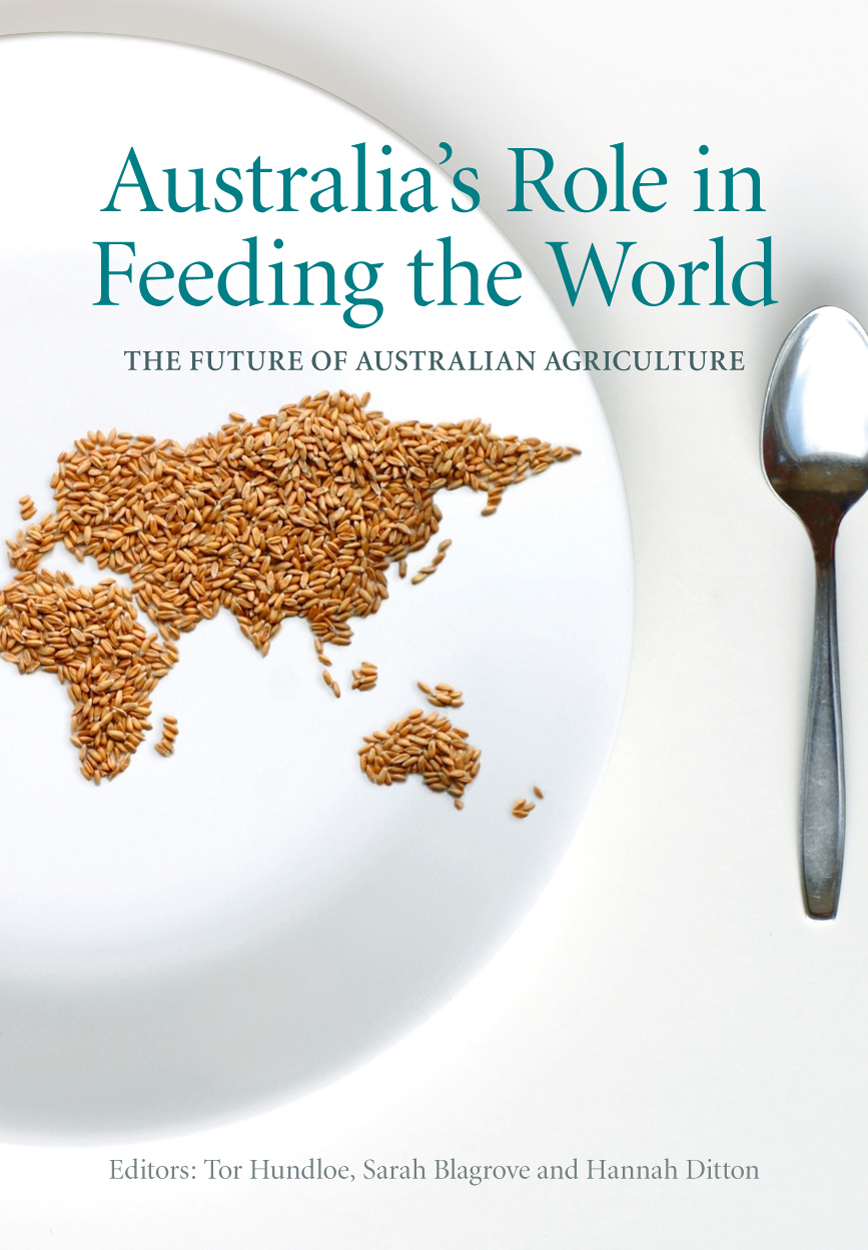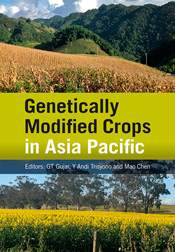Australia's Role in Feeding the World
The Future of Australian Agriculture
Edited by: Tor Hundloe, Sarah Blagrove, Hannah DittonCould Australia, in particular northern Australia, really become the 'food bowl' of Asia?
Earth's human population currently exceeds 7 billion, and by the year 2050 our planet will have at least two billion more mouths to feed. When faced with providing food for so many people, the idea is often advanced that Australia will become the 'food bowl' of Asia. Australia currently grows enough food to feed about three times its population and agricultural exports are important to our economy; however, Australia's role in feeding the world needs careful consideration. + Full description
This highly topical book draws together the latest intelligence on the sustainable production and distribution of food and other products from Australian farms. It examines questions that policy-makers, farmers, politicians, agricultural scientists and the general public are asking about the potential productivity of our arable land, the environmental and economic impacts of seeking to increase productivity, and the value of becoming cleaner and greener in our agricultural output. With chapters on the emergence of new markets, consumer trends in China, the biophysical constraints on agricultural expansion, and the various products of Australian agriculture and aquaculture, Australia's Role in Feeding the World provides valuable insight into the future of agriculture in this nation.
The book is ideal reading for academics and students in agriculture, environmental sciences, economics, Australian studies, international development studies; agricultural practitioners; and the food production industry.
- Short descriptionNews
This title is no longer available in print, but can still be purchased as an eBook.
Reviews
"Australia's Role in Feeding the World provides a blueprint for a future where both agriculture and the reef can coexist."
Leanne Oliveri, Innisfail Advocate, 6/8/16, pp 16
Details
ePDF | August 2016ISBN: 9781486305902
Publisher: CSIRO Publishing
Available from eRetailers
ePUB | August 2016
ISBN: 9781486305919
Publisher: CSIRO Publishing
Available from eRetailers
Features
- Draws together the latest intelligence on the sustainable production and distribution of food and other products from Australian farms.
- Most literature on food futures and food security pertains to developing countries. This one focuses on the challenges facing a developed nation (Australia).
Contents
About the editorsList of contributing authors
Acknowledgements
Introduction and a mud map
The Big Picture
1. Feeding the planet’s growing population
2. No escaping demand and supply
3. The global food supply
4. Australia's role
5. Trade, foreign investment and comparative advantage
Biophysical Limitations
6. Climate, rainfall, dams, bores and irrigation
7. Soils and underground critters 8. Australian fisheries resources
Human and Political Dimensions
9. Tar and cement, big holes, small wells and pipelines
10. When is a tomato not a tomato?
11. Waste not, want not: the case of the bent banana
Australia's Agricultural Export Products
12. Growing grains in Australia
13. Our Andy’s gone with cattle now
14. Horticulture
15. Sweet dreams of sugar
16. The chicken before the egg
17. Eggs
18. Australian fisheries production
19. Milking the cow
20. Wool, lamb and mutton
21. Cotton
22. A case study of agriculture: the Atherton Tableland
23. Farming the sun and wind
Towards a Sustainable Future
24. A blueprint for clean, green Australian agriculture
Endnotes
References
Index
View the full table of contents (PDF).
Authors
Tor Hundloe is a pioneer of environmental and natural resource economics. He has researched and taught at the University of Queensland, Griffith University and Bond University. He was also a Commissioner of the Industry Commission, where he undertook a public inquiry that changed water allocation and use in Australia. In 2003, Tor was made a Member of the Order of Australia (AM) for his contributions to natural resource management and awarded a Century Medal for his contribution to education.
Sarah Blagrove is an Environmental Scientist at a large international construction company. She earned an Award for Excellence from the Australian Council of Environmental Deans and Directors, and is engaged in postgraduate research based on food security on a part-time basis.
Hannah Ditton has a degree in Sustainable Environments and Planning, majoring in Urban Design and Planning. She has worked for the Green Building Council of Australia where her passion for sustainable development and planning originated.
Contributors: Curtis Attard, Sarah Cantwell, Jacques Chiomey, Juliano de Miranda, Danielle Gallegos, Daryl McPhee, Shayal Sharma, Alex Solakovic and Amy White.








